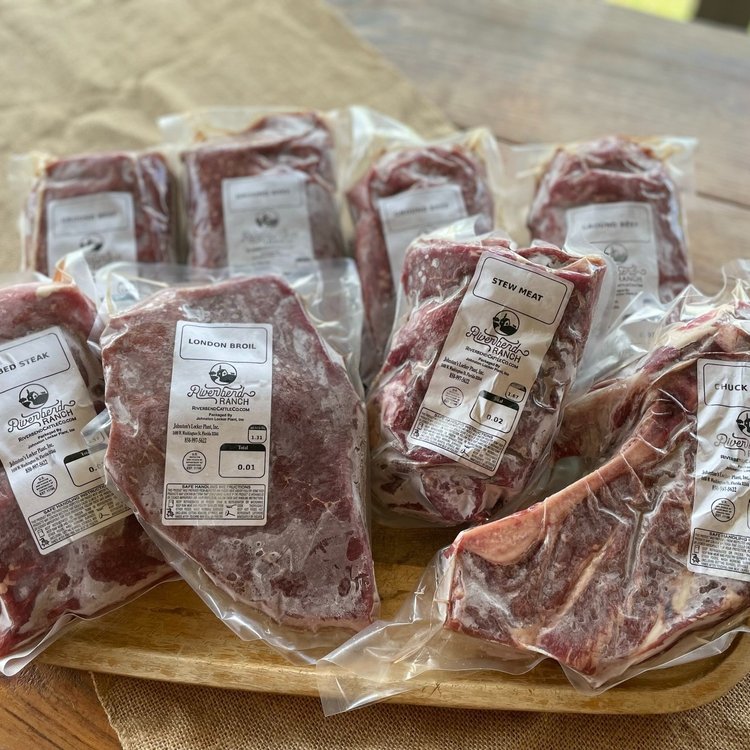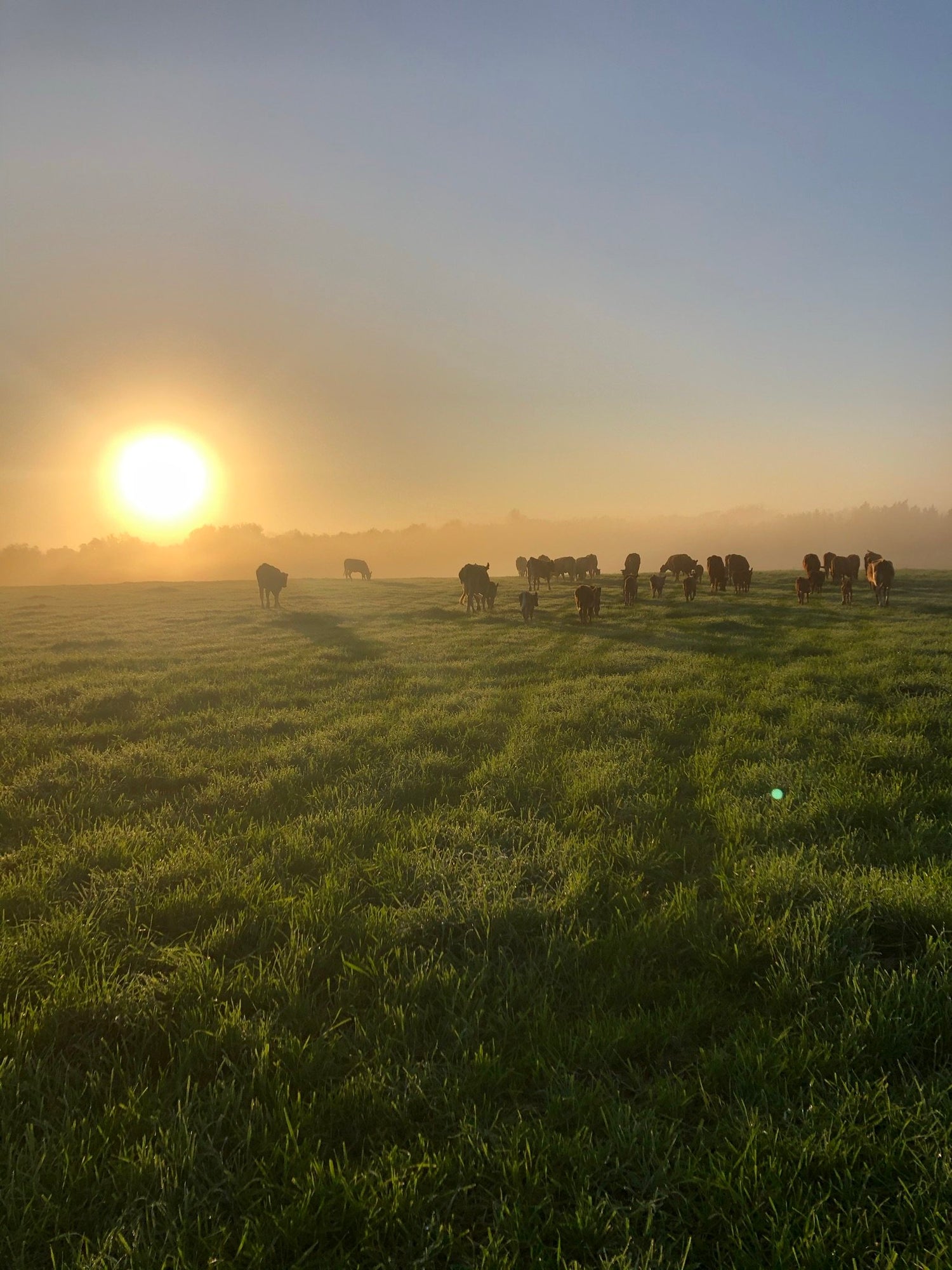
Raising Bees On Your Farm
Bees are a crucial part of our ecosystem. These vital contributors can pollinate about 80% of flowering crops including alfalfa, which the beef and dairy industries use for feed. And if we didn’t have bees, one-third of the food we eat would not be available. Unfortunately, the wild bee populations are in jeopardy, decreasing their beneficial impact and opening the door for more aggressive Africanized colonies to spread. For those reasons, we at Riverbend Cattle Company believe in the importance of protecting our wild bee populations. As part of our diversification efforts and environmental contributions, we raise honeybees on our farm and make sure that cultivation of honey is environmentally sound as well.
The Hive
At Riverbend Cattle Company, our bees are raised near our grass fed, grain finished beef cattle where our resident beekeeper maintains the hives of Italian honeybees. There are 4,400 bee species throughout North America, the most prolific species are the Carniolan and Italian honeybees. These varieties are chosen for their temperament and productivity. In Florida, the Italian honeybees are particularly suited to the environment, maintaining docile attitudes and productivity even in the high heat.
Honeybee hives are complex communities where nearly 100,000 members, mostly unfertile female worker bees, run the operations. These bees collect water, pollen, and nectar, the latter of which becomes the honey. The worker bee lifecycle lasts about 6 weeks, during that time they’ve collected enough nectar for only a fraction of a teaspoon of honey.
BeeKeeping
The first thing to understand about bee keeping is knowing your local climate and geography. Honeybee behavior is reliant on the climate. This will determine when you should start your hive. In Florida we have the advantage of mild winters and long, humid summers. This means honeybee queens can lay their eggs at any point of the year. There are beekeepers across the United States who move their bees to Florida farms during the winter.
There are several ways you can participate in healthy beekeeping and it’s become a lot easier to be a hobbyist these days. Some beekeepers engage in swarm catching, a natural way of populating hives. Others use the bait and trap method in which beekeepers use small amounts of lemongrass oil, which is similar in smell to the pheromone that worker bees release when they’ve reached a new hive. The lemongrass oil lures the bees into a designated hive. However, the majority of beekeepers use honeybee packages or nucs that come from breeders to populate any type of hive. Packages come in screened boxes that have 10,000 worker bees and one already inseminated queen, while nucs are essentially mini-hives containing eggs and larva and worker bees of all ages.
Once you’ve determined that your hive’s honey is ready, it’s time to suit up and start extracting. Some newer hives are created with a low-impact tap built in. In traditional hives, frames are pulled, uncapped, and extracted using centrifugal force in a spinner. Honey is then filtered and bottled for consumption.
Precautions
At our ranch, we are conscientious of the ecological impact of our practices. When a high number of honeybees occur in an area, they can push out wild bees, affecting wild plant reproduction. Wild bee pollination is essential to maintaining a healthy ecosystem. At Riverbend Cattle Company, our practices are designed to minimize the impact on the wild population, carefully monitoring our hives’ population size and health, minimizing the potential impact on wild bees.
Beekeeping isn’t new to North America. For several hundred years people have kept honeybees, which contribute economically to this country. Honey’s economic output was $4.74 billion in 2017. Also, the bees produce honey that doesn’t just taste good. Honey provides antibacterial properties, is a source of antioxidants, and heals wounds. At Riverbend Cattle Company we’re happy to be part of a long tradition of cultivating something that’s both sweet and good for you.


